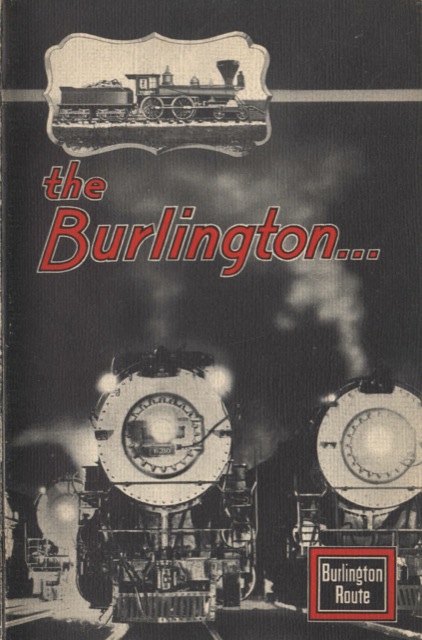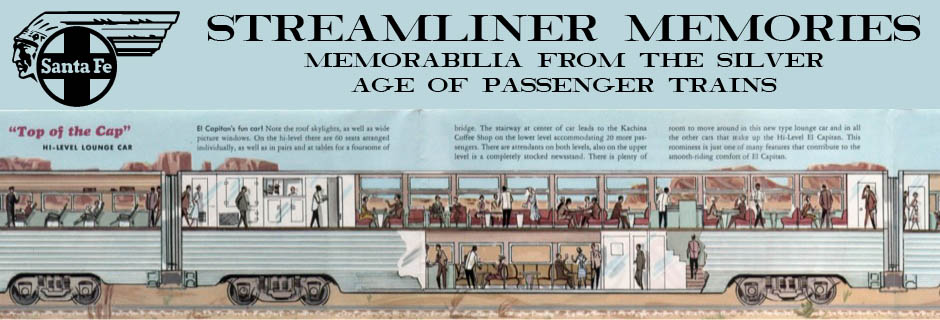WordPress says this is my 500th post. The first 365 posts were about streamlined trains, and the last 135 have been about heavyweight trains. Today I am going to ease back into streamlined trains with several posts about the transition era. This booklet was published by the Burlington for Chicago’s 1933 Century of Progress fair–the same fair at which, in 1934, Burlington would introduce the Zephyr.

Click image to download a 10.4-MB PDF of this 36-page booklet.
As the booklet shows, the railroads appeared to have a made a lot of progress since 1850, when the first train of what would become the Burlington Railroad rolled from West Chicago to Aurora, Illinois . The tiny locomotives and wooden passenger cars used in 1850 looked like toys in comparison with the super-powered steam locomotives and heavyweight steel Pullmans of 1933.
Yet we now know that progress would be dwarfed by what would happen in just the next twelve months. Great Northern’s president, Ralph Budd, had left that railroad to take the helm of the Burlington–GN’s subsidiary but actually the larger railroad–on January 1, 1932. The Burlington was the Midwest’s most profitable railroad, but the Depression had hit all railroads hard, and Burlington revenues in the month Budd took over were 72 percent below the previous January.
Eager to bring traffic back to the railroad, Budd had visited Edward Budd (who they later would determine was his distant cousin) at his Philadelphia factory, which was making auto bodies and a few stainless steel railcars, in September, 1932. A few months later, he wandered through the 1933 Chicago Rail Fair and saw a stationary Diesel engine on display at the General Motors exhibit. He put the two together and at the 1934 Chicago Rail Fair introduced the Zephyr to the world, with its stainless steel, Diesel power, roller bearings, air-conditioning, and high speeds–all revolutionary features unmentioned in the above booklet. Progress indeed!
